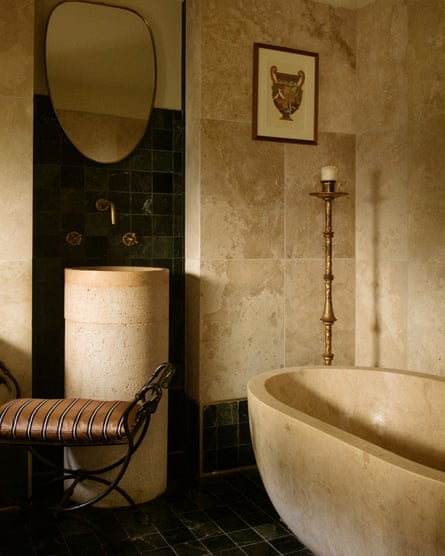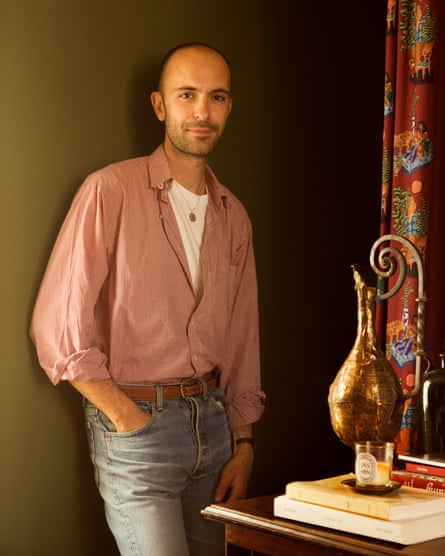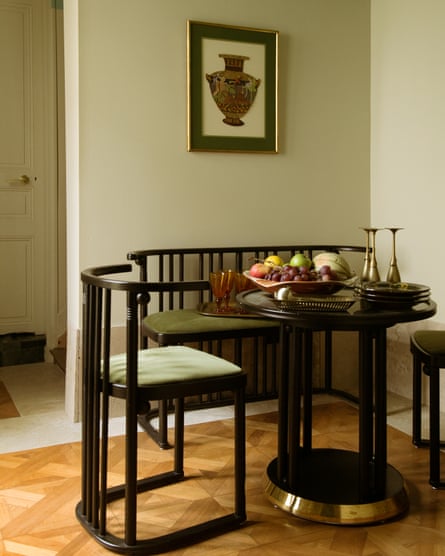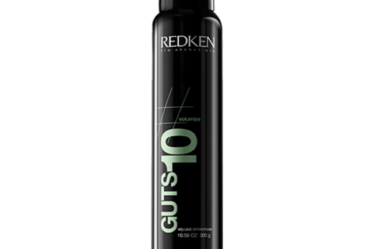
The town of Fontainebleau, southeast of Paris, has long been associated with opulence and royalty. Its magnificent palace, built in the 12th century, was once home to Marie Antoinette and Napoleon.
The area is covered by one of the largest national forests in France and it’s a favourite weekend escape for Parisians. Its many villages have attracted numerous artists since the 19th century. Among them is the decorative artist Victor Cadene, who chose to settle in an old house in the pretty village of Bourron-Marlotte.
Cadene left the structure of the building relatively unchanged, but has completely renovated the kitchen and bathroom. As for the interiors, the details all stem from his imagination. He is a decorative artist who creates two-dimensional scenes from his drawings, which he cuts out and assembles into collages, and much of his work is scattered throughout the house. His passion for art, design and colour can be seen everywhere.
“For me, aesthetic emotions take precedence over function,” he says. If he likes something, he will have it, whatever its purpose. Following this logic, objects chosen for their expressive power give rise to a highly theatrical staging.
In the living room, a 19th-century mahogany and marble guéridon (small table) and Directoire bench stand on a vibrant carpet of Cadene’s own design, while a pair of stools upholstered in Dedar fabric sit either side of the window.

Many of the objects have been picked up on Cadene’s travels, including an alabaster bowl and art nouveau vase. A 19th-century bronze head sits atop a rotating bookcase from the 1950s, near a dainty 1940s Italian stool.
The bathroom is in travertine and marble, and the bathtub comes from Turkey, while the plumbing fixtures are Moroccan. The brass mirror was made in 1960. “I have a taste for ‘inhabited’ objects,” he says, “I refuse to surround myself with ‘disembodied’ objects.”

Cadene defines himself as a self-taught artist and began his career in an art and furniture gallery alongside a visual artist whom he credits for instilling in him his love for colour and decorative arts. It was here that he began to create designs and stage setups. He then moved towards scenography and interior decoration, but it is his work as an artist-illustrator, creating paper scenographies, where he imagines miniature and baroque worlds, that is his true calling.
Cadene works like a goldsmith. Each element is hand-drawn before being cut with a scalpel, refined, touched up, glued and delicately brushed to achieve the perfection of the moment.
The drawing then becomes the prototype and comes to life in decorative and ornamental settings, transforming into wallpapers, fabrics and dreamlike scenography. There is little division between his professional and personal life, so that this warm, dreamy feeling inhabits his whole home.



